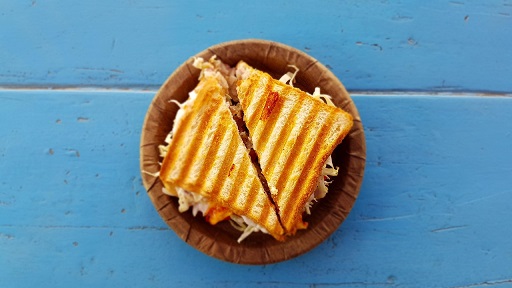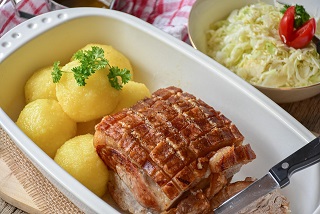
In Germany, the middle of the day is more than a time to eat – it is a carefully protected ritual known as the Mittagspause, or German lunch break. At around 12:00, offices, factories, and shops across the country pause in unison. Computers are locked, tools are set down, and workers step away from their desks not just to refuel their bodies, but to restore their minds, connect with colleagues, and observe a cultural rhythm deeply rooted in German values of structure, balance, and human wellbeing.
Unlike in many countries where lunch is eaten quickly at one’s desk or skipped altogether, the German lunch break is protected both culturally and legally. It is considered a fundamental component of productivity, health, and social cohesion, not an interruption of work. To understand German working life, business etiquette, or daily routines, one must first understand the deeper meaning behind this midday pause.
This article explores the origins, evolution, and modern significance of the Mittagspause – blending historical insight, cultural interpretation, and practical guidance for international professionals, expats, and students in Germany.
Historical Origins of the German Lunch Break
The prominence of the midday meal in Germany can be traced back centuries to rural life and agricultural labor. In agrarian communities, work began at dawn. By midday, farmers required substantial nourishment to continue through the afternoon. This was not a light snack but the main meal of the day, often hot and hearty, eaten with family at home.
From Field to Factory: Continuity Through Change
When Germany industrialized in the 19th century, daily rhythms changed from fields to factories, but the cultural expectation of a proper midday meal remained intact. Industrial workers pushed back against attempts by factory owners to minimize or eliminate breaks, and by the late 1800s, the lunch break became a legally recognized workers’ right.
The Weimar and Post-War Periods
During the Weimar Republic, factory cafeterias proliferated, making the lunch break an institutionalized part of workplace infrastructure. After World War II, both East and West Germany reinforced the importance of the lunch break in labor regulations. The Mittagspause became embedded in modern German identity, symbolizing:
- Respect for workers’ physical and mental wellbeing
- A structured approach to time management
- The belief that productivity depends on balance, not overwork
This cultural continuity demonstrates that German lunch traditions are not merely habits – they reflect a value system that prioritizes health, stability, and order.
The Cultural Significance of the Mittagspause
To outsiders, the German lunch break may appear as simple meal scheduling. But to Germans, it reflects deeper cultural principles:
1. Work-Life Boundaries
Germany is known for clear separations between work and personal time. The Mittagspause is considered personal time, even if spent on company premises. Workers are not expected to answer phones or emails during this period.
2. Focus on Health and Nourishment
The German concept of health, or Gesundheit, goes beyond physical fitness. It includes structured nutrition, digestion, and mental clarity. A warm, substantial meal at midday is seen as essential to maintaining energy and preventing afternoon decline.
3. Collective Rhythm
Unlike flexible lunch hours common in other countries, the German lunch break often occurs around the same time for most workers. This shared rhythm is reflected in how cities function: restaurants offer special lunch menus, streets become momentarily crowded, and then everything quiets again as people return to work refreshed.
4. A Time for Social Connection
While Germans value privacy, they also place importance on structured social interaction. The lunch break offers a professional yet relaxed environment to build trust, exchange ideas, and strengthen workplace relations – without intruding into personal evening time.
For more on cultural expectations in the workplace, see German Office Etiquette.
The Structure and Timing of the German Lunch Break
The Mittagspause typically occurs between 11:30 and 13:30, with the peak at 12:00 to 13:00. While the timing may vary by region and industry, it is usually synchronized across an entire workplace.
Typical Duration
- Office jobs: 45 minutes to 1 hour
- Industrial or manufacturing roles: 30 minutes (minimum by law), often longer
- Apprenticeships and vocational programs: strictly observed lunch periods, reflecting the importance of establishing healthy work habits early (see: German Apprenticeships – Vocational Training in Germany)
A True Break – Not Working While Eating
Eating at one’s desk is widely discouraged in Germany. It is often viewed as:
- Unhygienic
- Socially isolating
- A sign of poor time management
- Contrary to workplace expectations around health and balance
Stepping away from the desk is not just a suggestion – it is the expected norm.
What Germans Eat During Lunch: Traditional and Modern Options
The German lunch break is centered around warm, nourishing food, not snacks or convenience meals. The midday meal, or Mittagessen, has traditionally been the main meal of the day.
Traditional German Lunch Dishes Include:
- Schnitzel with potatoes and seasonal vegetables
- Bratwurst with sauerkraut
- Gulaschsuppe (goulash soup)
- Käsespätzle (cheese noodles)
- Stews, roast meats, and hearty casseroles
Cafeterias (Kantinen) in factories and offices typically offer several hot options, including:
- Meat-based dish
- Fish dish
- Vegetarian dish
- Salad and soup bar
Modern Shifts: Health and Variety
Contemporary lunch culture reflects changing health trends and global influences. Today, you will commonly find:
- Mediterranean dishes
- Asian stir-fries
- Turkish-inspired meals like Döner bowls
- Vegan and low-carb options
However, the cultural expectation remains the same: lunch should be a proper, warm, and filling meal.
Beverages
- Sparkling water is most common
- Coffee is usually consumed after lunch, not during
- While beer at lunch is rare today, it still appears in some regions, especially in Bavaria or in traditional industries
The Social Dimension of Lunch in Germany
Unlike casual lunch cultures where employees scatter, Germans often eat together in groups. These groups are typically consistent day-to-day, based on department or project team.
Lunch Talk: What’s Appropriate
Lunch conversations tend to be:
- Relaxed but professional
- Focused on neutral topics (travel plans, current events, hobbies)
- Rarely deeply personal
This reinforces work relationships while respecting privacy.
Informal discussions during lunch often lead to improved workflow, collaborative problem solving, and mentorship opportunities. It is common for decisions to be informally shaped at the lunch table before being formalized in meetings.
For deeper insight into how this ties to productivity and workplace success, see The German Work Ethic: What You Need to Know About Business Culture.
Practical Guidance for Expats and International Professionals
For anyone working in Germany – whether in a multinational corporation, a university, a start-up, or a vocational training program – understanding and respecting the German lunch break culture is essential for professional success.
Do’s and Don’ts During the Lunch Break
| Practice | Expected in Germany | Why It Matters |
|---|---|---|
| Leaving your desk to eat | ✅ Yes | Shows respect for workplace norms and personal wellbeing |
| Eating a warm meal | ✅ Preferable | Associated with health and productivity |
| Taking at least 30 minutes | ✅ Required by law | Lunch is a protected time for recovery |
| Working during lunch | ❌ Discouraged | Seen as inefficient, unhealthy, and culturally insensitive |
| Scheduling meetings during lunch | ❌ Not acceptable | Lunch is reserved personal time |
| Socializing with colleagues | ✅ Encouraged | Builds trust and professional relationships |
Tip for expats: If invited to lunch by colleagues, accept whenever possible. Declining regularly may signal disinterest in workplace integration.
Legal Framework Protecting the German Lunch Break
The Arbeitszeitgesetz (Working Hours Act) governs breaks and rest time in Germany. The law is clear:
- Employees working more than 6 hours per day must receive at least 30 minutes of uninterrupted break.
- If working more than 9 hours, they must receive at least 45 minutes.
- These breaks cannot be taken at the end of the workday (they must interrupt the working hours).
- Breaks are not paid time by default, unless specified in a contract or collective agreement.
The Role of Works Councils
In many German companies, employee-run works councils (Betriebsräte) ensure:
- Lunch breaks are respected
- Cafeterias or food options are available
- Break times are coordinated fairly
- Management cannot pressure employees to shorten breaks
This strong legal and institutional support reflects how lunch is not a luxury in Germany – it is a right.
Industry and Regional Variations in Lunch Tradition
Manufacturing and Industrial Jobs
- Highly structured lunch breaks
- Large on-site cafeterias
- Workers often eat in designated dining halls
- Breaks are synchronized to maintain production schedules
Office and Corporate Environments
- More flexibility in timing
- Cafeterias, canteens, or partnerships with local restaurants
- Employees may use vouchers to subsidize meals
Regional Differences
- Bavaria & Southern Germany: Strong adherence to the traditional warm lunch; beer at lunch may still be culturally acceptable in rural areas
- Northern Germany: More flexible timings; seafood appears more in midday meals
- Urban centers: Greater multicultural influences; vegetarian and vegan options are common
How Germany Compares to Other Countries
| Country | Average Lunch Break Length | Cultural Attitude | Key Difference from Germany |
|---|---|---|---|
| Germany | 45–60 minutes | Protected and structured | Main meal of the day; legally enforced |
| United States | 15–30 minutes | Often eaten at desk | Lunch seen as optional or secondary |
| France | 60–90 minutes | Culinary experience | More emphasis on pleasure than structure |
| Spain | 2–3 hours (siesta culture) | Rest and recharge | German lunch is shorter with no sleep break |
| Japan | 30–45 minutes | Quick efficiency | Eating alone is common; less social |
| UK | 30 minutes typical | Increasing desk eating | Less emphasis on warm meals |
Germany’s approach is a unique balance of nourishment, order, and efficiency. It is neither rushed nor leisurely, but intentionally structured to protect wellbeing while maintaining productivity.
The Future of the Mittagspause
Remote Work and Flexible Hours
The rise of home offices has changed how lunch is taken. Yet even remote German employees report maintaining the ritual of stepping away from their computers to prepare a warm meal. The cultural value is internalized, not dependent on location.
Health and Sustainability Trends
- Increasing popularity of plant-based meals
- Reduction in heavy meat consumption
- Focus on organic and local produce
- Cafeterias introducing climate-friendly menus
Globalization vs Tradition
While international companies sometimes attempt to shorten lunch breaks to match global schedules, employee resistance and legal protections help preserve the Mittagspause.
Will the German Lunch Break Disappear?
All evidence suggests no. Instead of vanishing, it is adapting. The values behind it—balance, wellbeing, productivity – align with modern research on human performance. The Mittagspause has become not just a tradition, but a competitive advantage in workplace wellness.
Quick Facts: German Lunch Break at a Glance
- Typical Time: 12:00–13:00
- Average Duration: 45–60 minutes
- Legal Requirement: Minimum 30 minutes (for 6-hour shifts)
- Main Meal: Traditionally the biggest meal of the day
- Social Role: Encourages professional connection without invading private life
- Desk Eating: Discouraged
- Key Value: Rest is seen as essential for productivity, not opposed to it
Frequently Asked Questions (FAQ)
Do Germans really stop working during the lunch break?
Yes. The majority of workplaces pause operations, and answering calls or emails during lunch is generally discouraged.
Can I eat at my desk in Germany?
Technically possible, but culturally frowned upon. It may be seen as unhealthy or antisocial.
How long is the German lunch break by law?
At least 30 minutes for anyone working over six hours, and 45 minutes for nine hours or more.
Is lunch paid time in Germany?
Usually no, unless specified in a contract or collective agreement.
Do German schools and apprenticeships observe lunch breaks?
Yes. Vocational training programs include structured lunch breaks as part of professional integration.
Do Germans drink alcohol at lunch?
In most modern workplaces, no. However, in certain traditional regions or industries, a small beer may still be consumed with a meal.
Why Understanding Lunch Traditions Germany Matters
The German lunch break, or Mittagspause, is far more than a pause in the working day. It is a cultural institution that reflects Germany’s deeply held beliefs about balance, health, productivity, and respect for human needs. Whether you are an expat starting a new job, a student of German culture, or a professional working with German colleagues, recognizing the importance of the lunch break reveals how Germans structure time, manage energy, and build community.
To fully understand German workplace culture, explore these connected topics:
- German Office Etiquette
- The German Work Ethic: What You Need to Know About Business Culture
- German Apprenticeships – Vocational Training in Germany
- German Work Culture: Understanding Work Life in Germany
The Mittagspause is not just about food – it is about how Germany believes life should be lived: with structure, with dignity, and with time for what truly matters.








